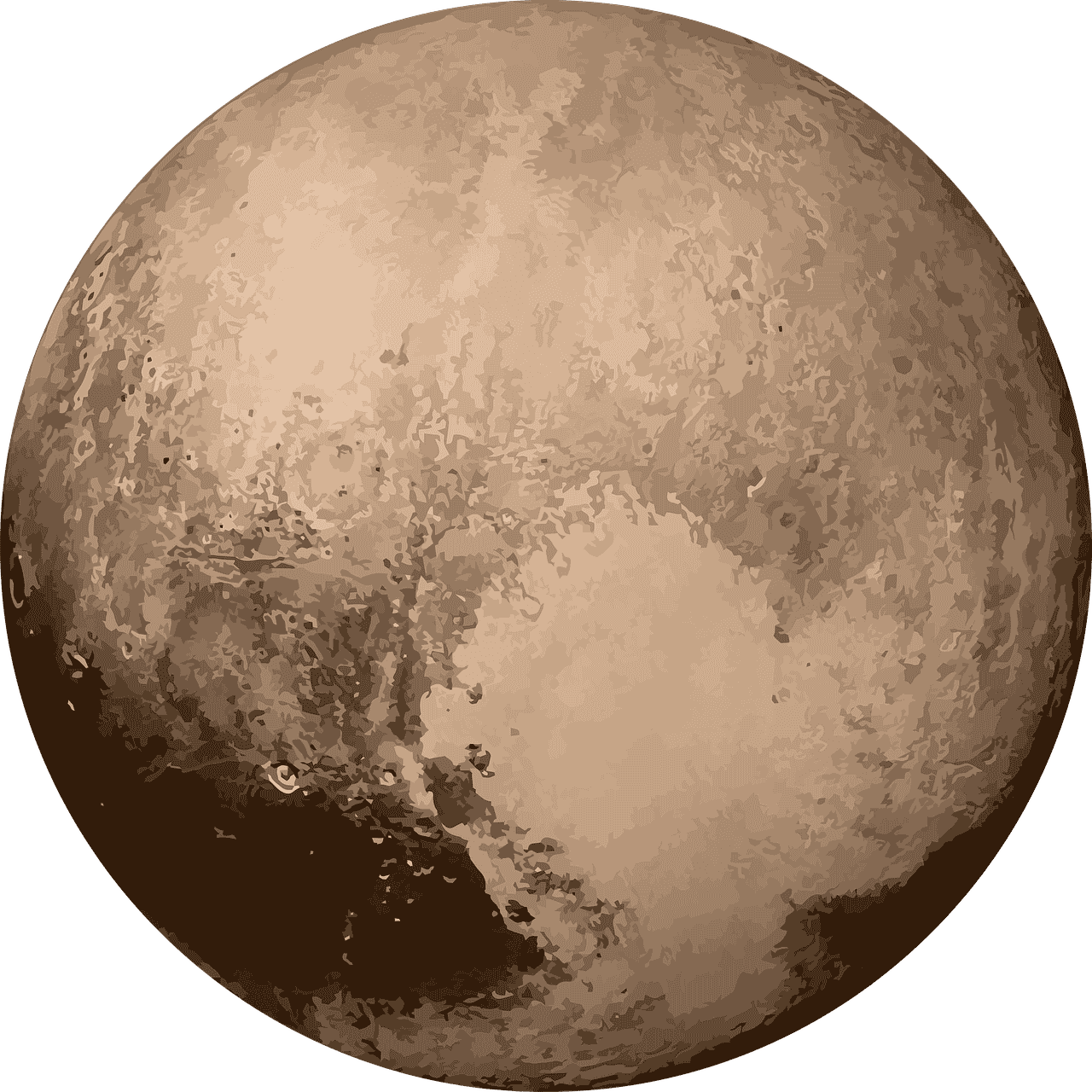Pluto was once considered the ninth planet of our solar system but was reclassified as a dwarf planet in 2006 by the International Astronomical Union (IAU). Located in the Kuiper Belt, a region beyond Neptune filled with icy bodies, Pluto is a world of extremes and mysteries.
Physical Characteristics & Atmosphere
- Pluto has a diameter of about 2,377 km, making it smaller than Earth's Moon.
- Its surface is covered with nitrogen ice, methane ice, and water ice, creating a diverse landscape of mountains, plains, and glaciers.
- Pluto's thin atmosphere is primarily composed of nitrogen, with traces of methane and carbon monoxide. It undergoes seasonal changes as it orbits the Sun.
Exploration
NASA's New Horizons mission flew by Pluto in July 2015, providing the first close-up images and data about this distant world. The spacecraft revealed a complex and varied surface, with large ice mountains and vast plains.
Why Is Pluto Important?
Pluto is a key to understanding the outer solar system and the formation of planetary bodies. Its unique orbit, five known moons (including the large moon Charon), and dynamic surface features make it a fascinating object of study for astronomers and planetary scientists. Pluto's heart-shaped glacier, Tombaugh Regio, has become an iconic symbol of this distant world.
Fun Facts About Pluto
- Pluto takes 248 Earth years to complete one orbit around the Sun.
- Its orbit is highly elliptical, sometimes bringing it closer to the Sun than Neptune.
- Despite its small size, Pluto has a surprisingly complex geology, with evidence of possible cryovolcanoes and shifting ice plains.
Pluto and the Kuiper Belt
As one of the largest known objects in the Kuiper Belt, Pluto helps scientists learn about the early solar system and the processes that shaped our planetary neighborhood. The study of Pluto and other Kuiper Belt objects continues to reveal new insights into the diversity and evolution of worlds beyond Neptune.
Pluto may be small, but its mysteries are vast. Its story reminds us that our solar system is full of surprises, waiting to be discovered.
